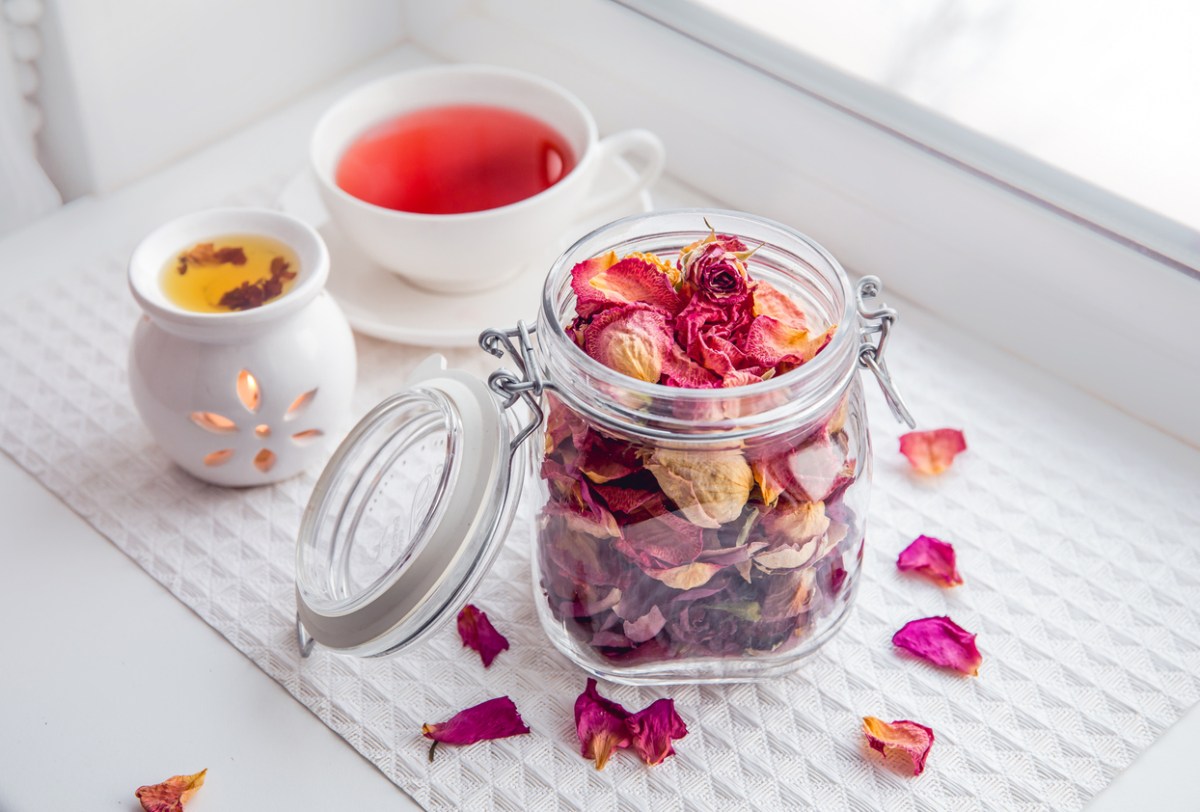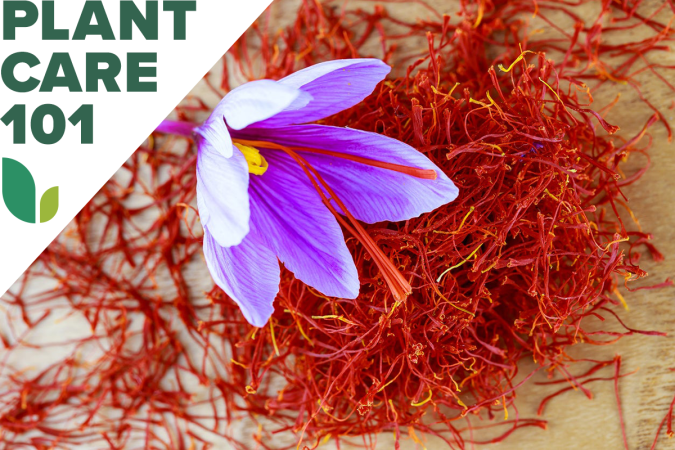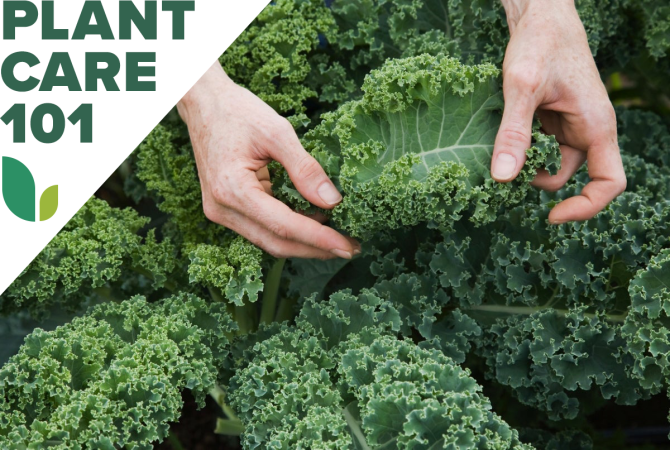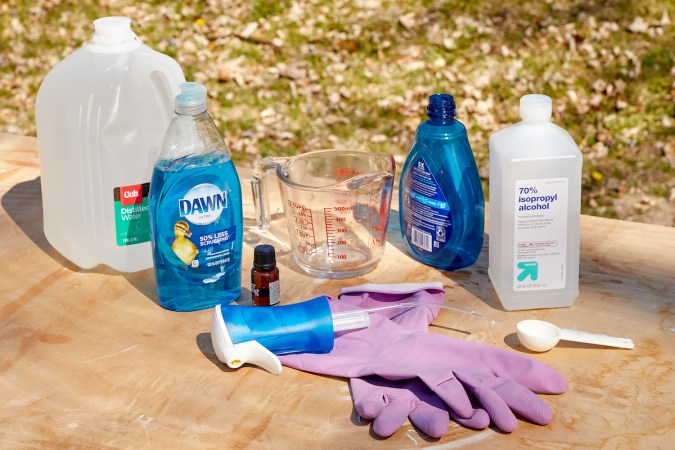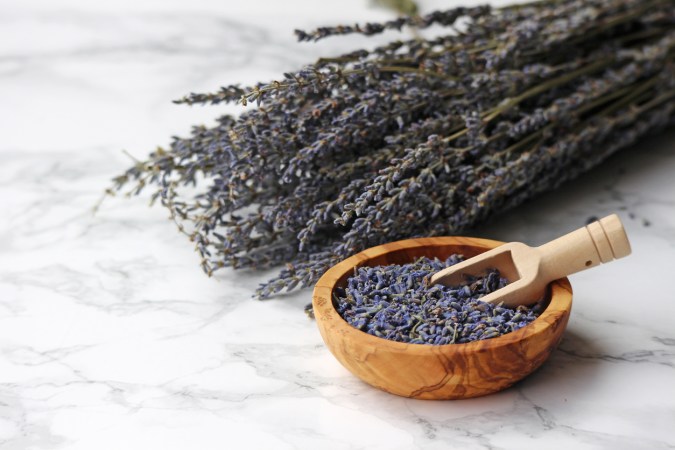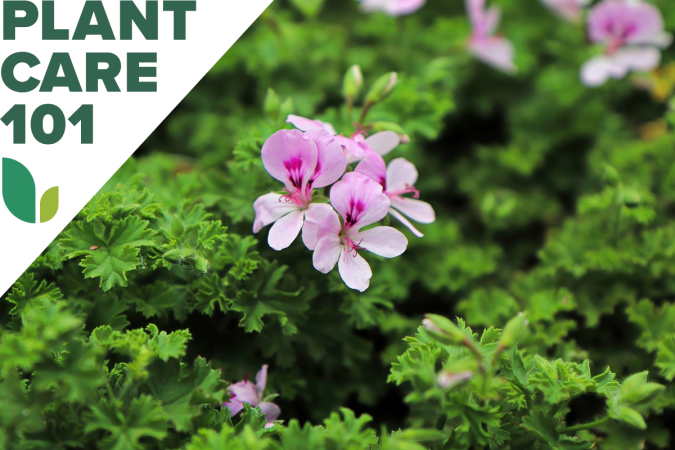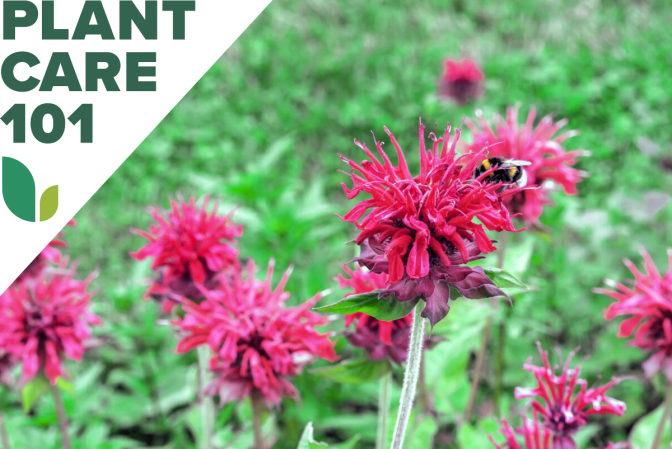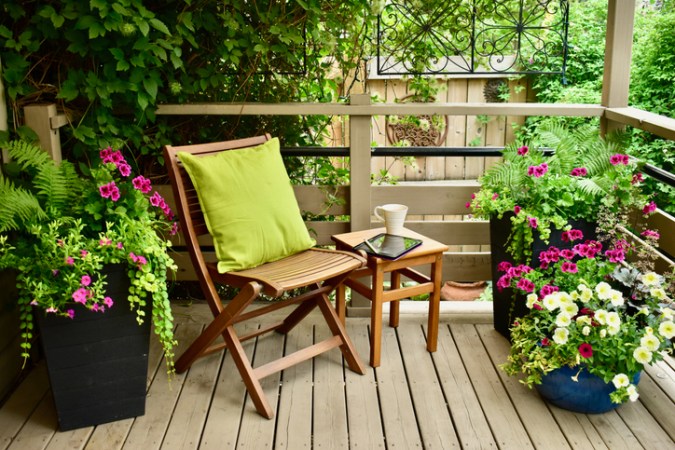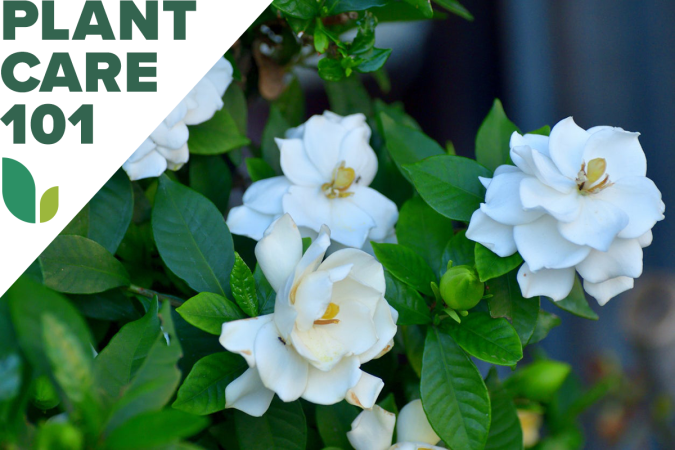We may earn revenue from the products available on this page and participate in affiliate programs. Learn More ›
What is potpourri? It’s a collection of dried flower petals, leaves, herbs, and spices that emit a gentle, pleasant fragrance. Some combinations have added benefits, such as warding off bugs.
Various blends of potpourri have been used for centuries to make buildings and homes smell fresh. The French word literally means “putrid pot,” but the results of combining aromatic flowers and leaves are intended to alleviate bad smells.
Tools & Materials
Bobvila.com may earn a commission from purchases made through these links.
Project Overview
Working Time: 30 to 60 minutes
Total Time: 30 minutes to 2 weeks
Skill Level: Beginner
Estimated Cost: $5 to $25
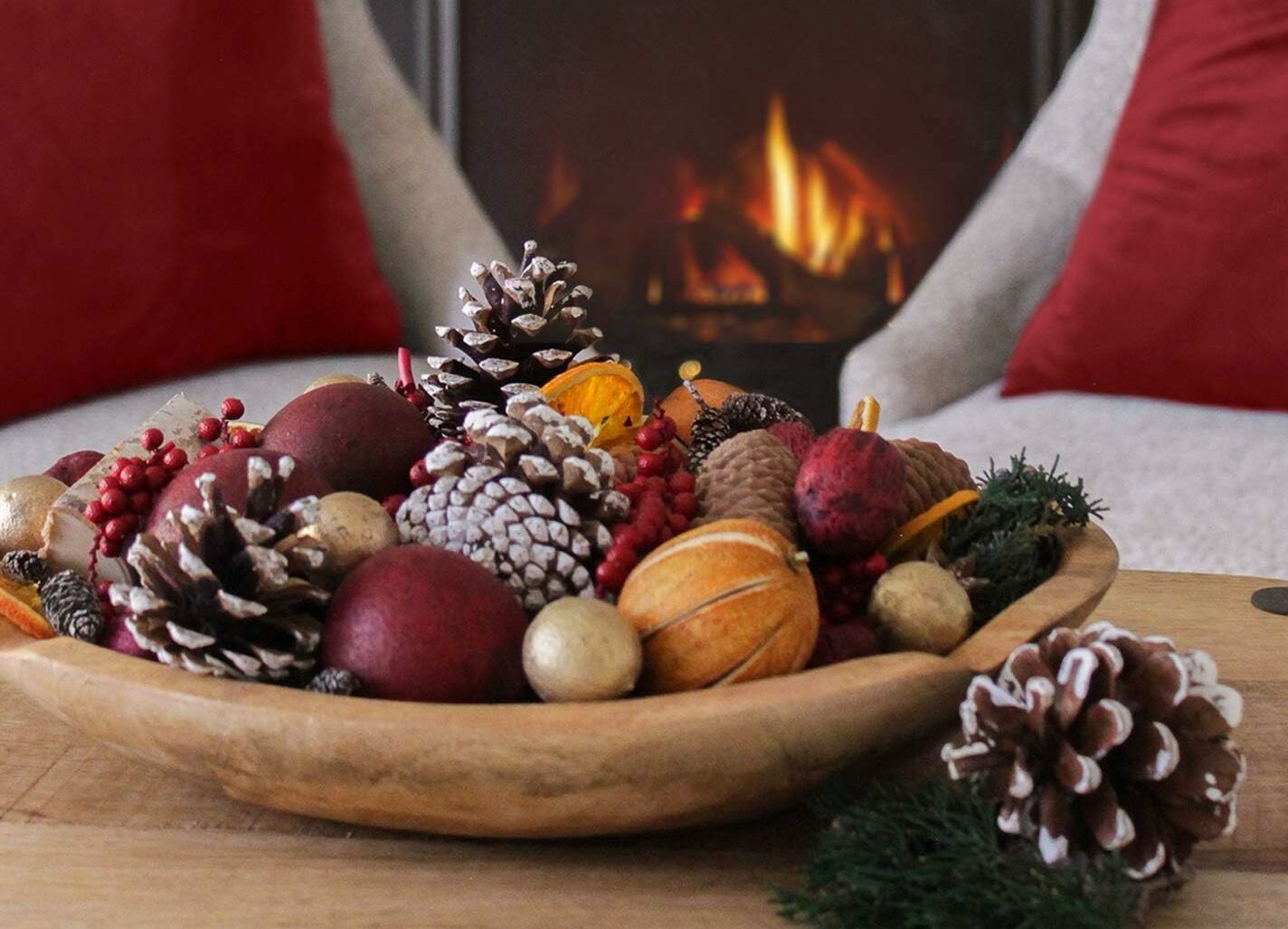
Before You Begin
There are many potpourri recipes and potpourri scents to choose from when researching how to make potpourri. For example, to create a winter holiday scent, select ingredients like rosemary, balsam fir, or pine. Add anise, cinnamon, or cloves for a spicier scent. Peppermint, rosemary, and lemon verbena produce an uplifting fragrance, while lavender and chamomile make a more relaxing scented potpourri.
There are different methods of drying flowers for potpourri. In the air-drying method, stems of flowers are bundled, tied with twine, and hung upside down to dry. You can also dry flowers by layering them in silica gel, but the oven-drying method is the quickest.
RELATED: The Best Flower Delivery Services for Beautiful Arrangements
STEP 1: Preheat the oven to the lowest temperature setting.
If you plan to make potpourri from fresh flowers, you’ll need to dry them first, which you can do quickly using your oven.
Use the lowest temperature setting on your oven or convection oven: 100 to 200 degrees Fahrenheit. If the heat is set too high, the flowers will burn. A controlled temperature is best. The benefit of oven-drying is the chance to get the flowers thoroughly dry so there are no mold or mildew issues later. Even flowers that have been hung dry or dried in silica can benefit from finishing in the oven to ensure that all moisture has been removed.
STEP 2: Select and prepare the flowers for drying.
You can cut fresh flowers in your garden, recycle a fading bouquet, or purchase dried flowers. If you’re gathering flowers from your garden, harvest early in the day after the dew has evaporated. Reject flowers with damaged or bruised petals. The best flowers for oven-drying include large flowers, flowers with multiple layers, and flowers with open-faced petals. Roses are the most popular dried flower. Tulips, zinnias, chrysanthemums, sunflowers, lavender, and statice are good choices.
Cut the stems of your potpourri flowers to the desired length and remove excess foliage using the thorn stripper.
STEP 3: Place flowers on the baking sheet and set the timer.
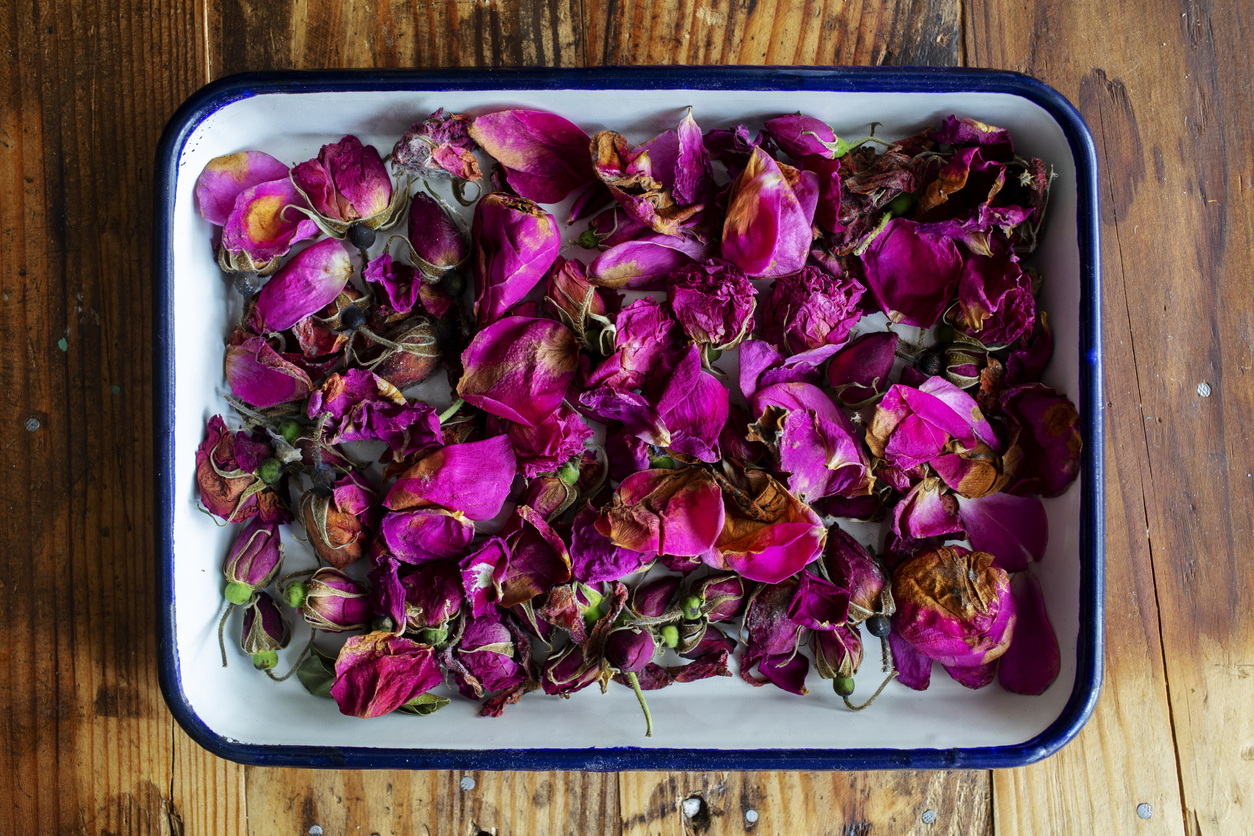
If you purchase dried flowers for potpourri, there’s no need to oven-bake them, but if you’re using fresh flowers, they’ll need to be dried. Place parchment paper on the baking sheet before arranging flowers face-up on top, one layer deep, preferably on a cooling rack that sits on the lined baking sheet. Try to space them out so they aren’t touching.
Set the timer for 1 hour, or 1.5 hours if there are a lot of flowers on the baking tray (even as long as 2 hours if the flower heads are large or thick). Check on them every 15 to 30 minutes to make sure they aren’t over-drying or scorching. They should feel dry and crisp to the touch when done.
STEP 4: Remove from the oven and let flowers air-dry to cool.
When the flowers are fully dehydrated, remove them from the oven. Leave them on the baking sheet and let them cool for 8 to 12 hours. They should feel brittle or crisp to the touch.
Even if some of the flowers didn’t completely dry in the oven, they can finish the drying process at this point. Don’t attempt to store flowers that aren’t fully dehydrated because any moisture trapped in them could produce mold or mildew.
STEP 5: Add essential oils and preservatives.
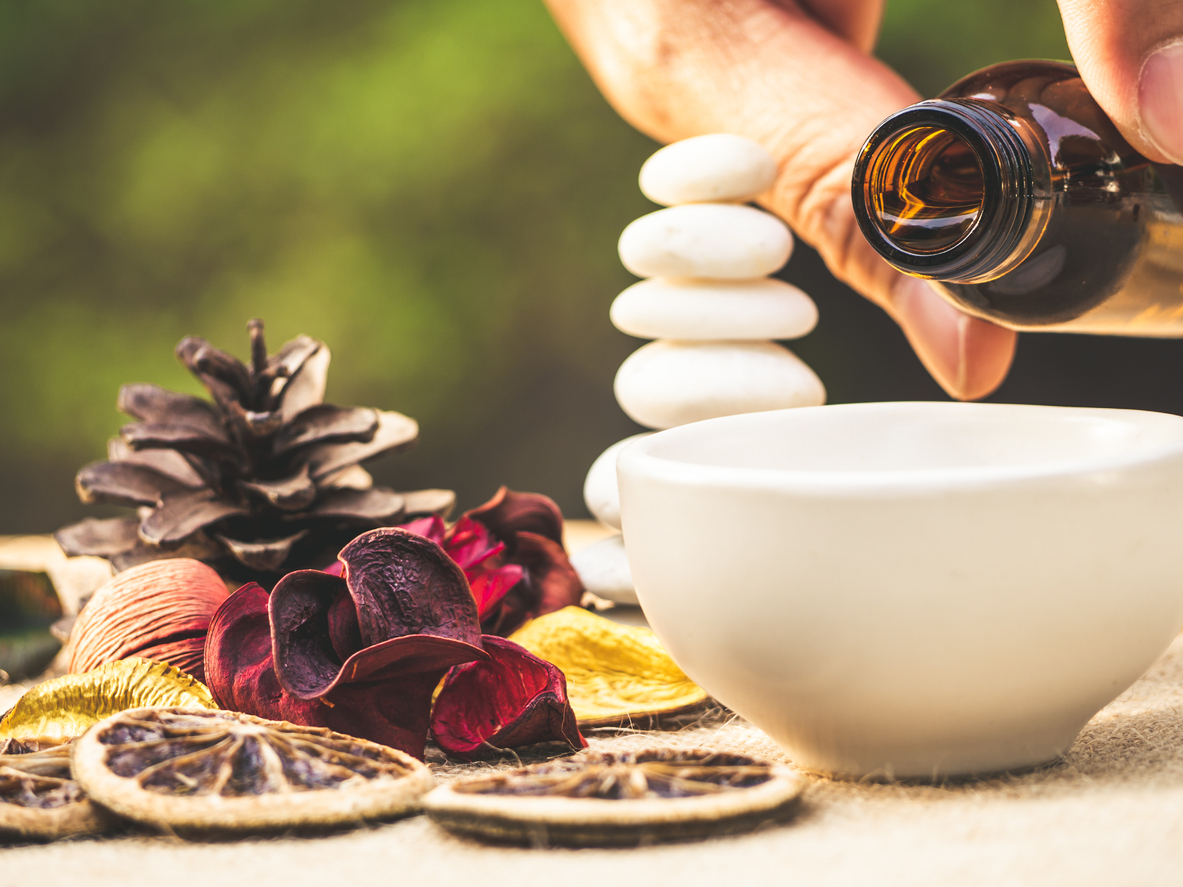
Before placing your mixture in a potpourri pot or potpourri bags, enhance the scent by adding five to 10 drops of essential oil or fragrance oil to the dried petals. This is necessary because dried flowers don’t usually retain their original fragrance after they’re dried. Adding 1 to 2 tablespoons of orris root powder can extend the life of the potpourri. It is both a fixative that enhances the aroma of the oils and a preservative. Gently toss and place the flowers, fragrance, and powder in a paper sack to let the ingredients mix.
Spraying the mix with hairspray can also help preserve the flowers, preventing petal loss and helping them retain their shape.
RELATED: 20 Candle Scents to Make the Inside of Your House Smell Like a Spring Garden
Final Thoughts
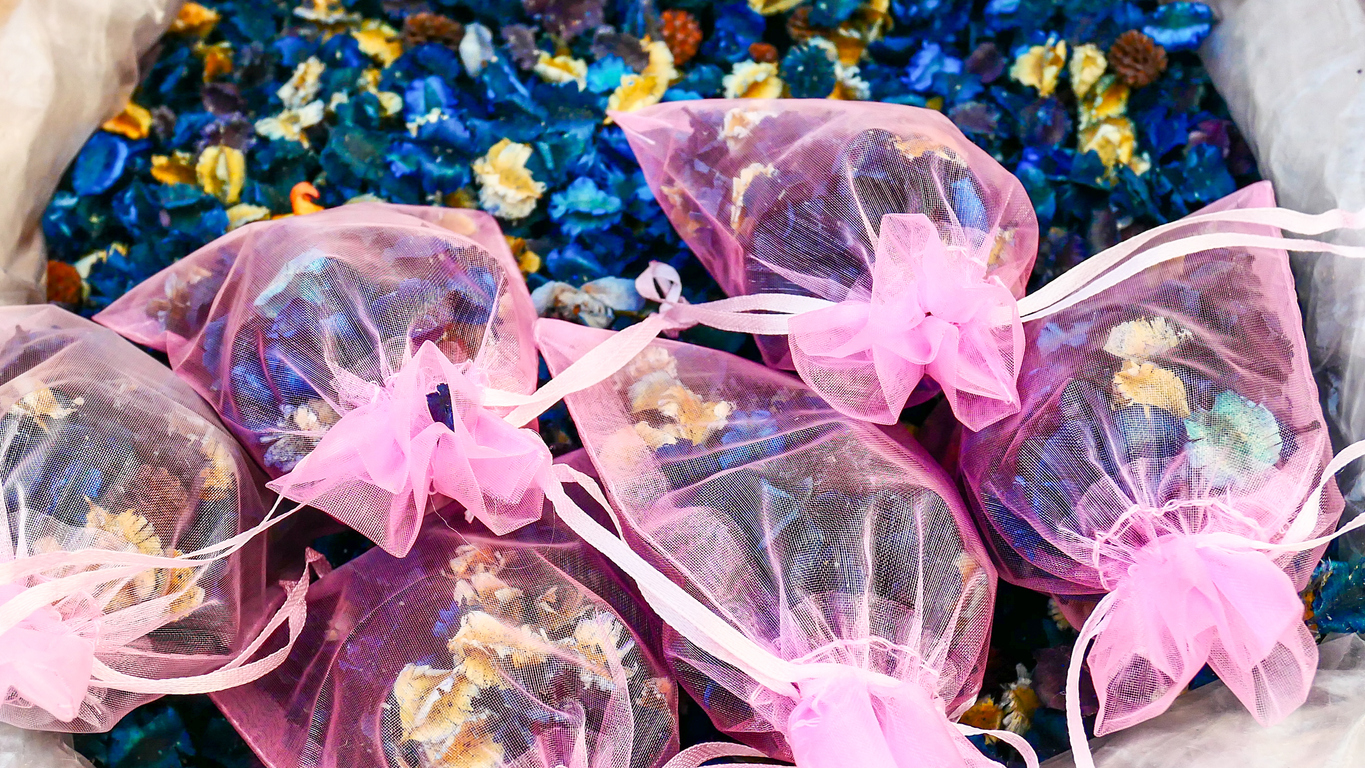
Just as it’s easy to get hooked on flower arrangements, once you get the hang of making your own potpourri, you’ll start looking at flowers in a new way, intuitively selecting those with the best shape, size, fragrance, and color to make these “putrid pots.” The key to successful potpourri is flower selection and ensuring thorough drying.
After you’ve seen how easily you can make a few sachets or pots of potpourri, you’ll probably want to make more—for yourself and as gifts!

